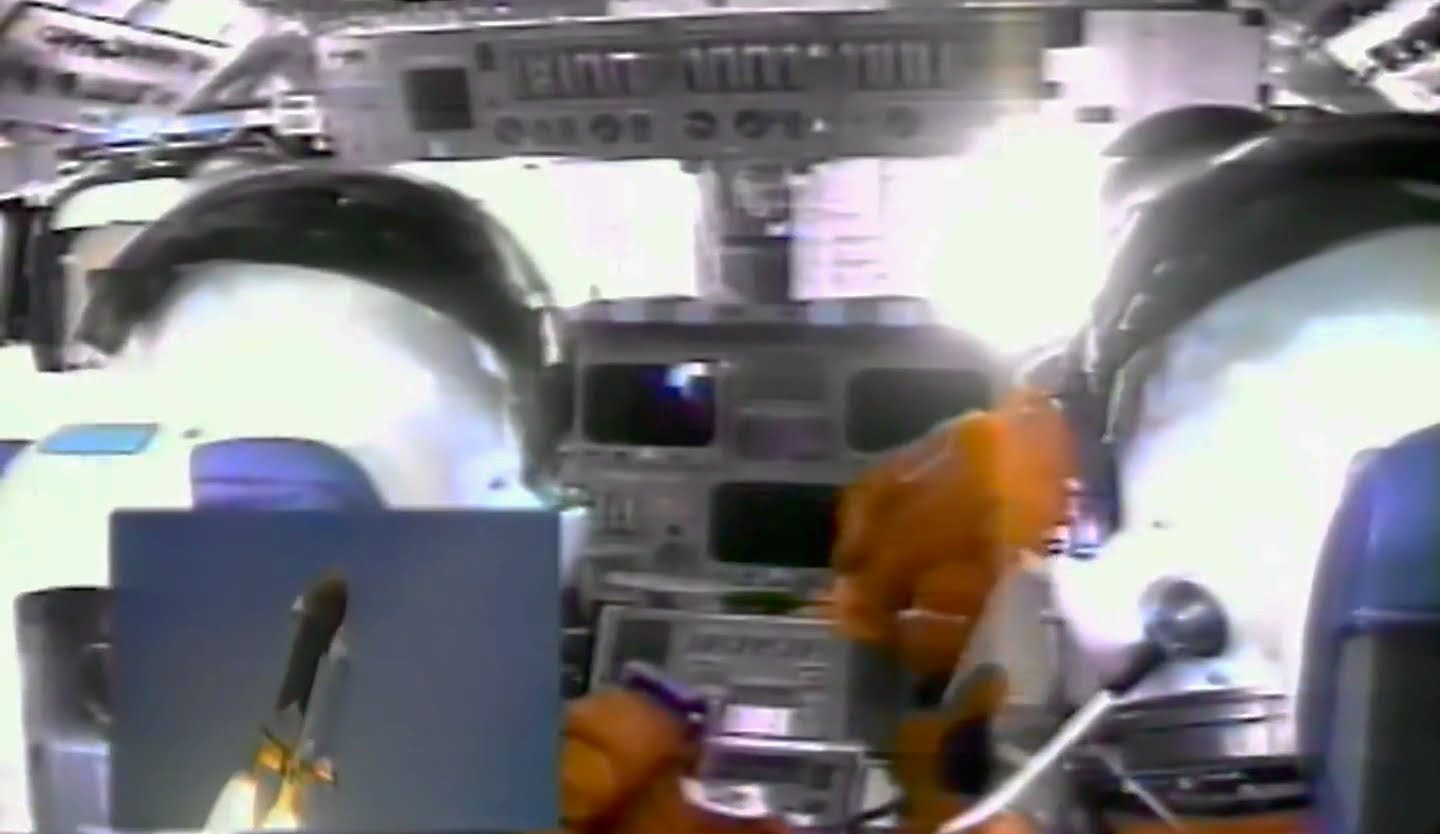more at
“An astronaut`s eye view of what happens inside the flight deck during launch and landing at the Kennedy Space Center. This footage was taken onboard Space Shuttle mission STS-65, the mission that launched the International Microgravity Laboratory in 1994. This raw footage could be useful for classroom launch simulations.” The original footage was shot on a Canon Hi-8 camcorder. An inset picture-in-picture shows the exterior view of the launch until the shuttle was out of sight.
Public domain film from the US National Archives, slightly cropped to remove uneven edges, with the aspect ratio corrected, and one-pass color correction & mild video noise reduction applied.
The soundtrack was also processed with volume normalization, noise reduction, clipping reduction, and/or equalization (the resulting sound, though not perfect, is far less noisy than the original).
Commander: Robert D. Cabana
Pilot: James Donald Halsell, Jr.
Mission Specialists: Richard J. Hieb, Carl E. Walz, Leroy Chiao, Donald A. Thomas
Payload Specialist: Chiaki Naito-Mukai
Dates: July 8-22, 1994
Vehicle: Columbia OV-102
Payloads: IML-2, CPCG, SAREX-II, OARE, MAST, and AMOS
Landing site: Runway 33 at Kennedy Space Center, FL
The Space Shuttle was a partially reusable low Earth orbital spacecraft system operated by the U.S. National Aeronautics and Space Administration (NASA)… The first of four orbital test flights occurred in 1981, leading to operational flights beginning in 1982. They were used on a total of 135 missions from 1981 to 2011, launched from the Kennedy Space Center (KSC) in Florida…
After the final hold in the countdown at T-minus 9 minutes, the Shuttle went through its final preparations for launch, and the countdown was automatically controlled by the Ground Launch Sequencer (GLS), software at the Launch Control Center, which stopped the count if it sensed a critical problem with any of the Shuttle’s onboard systems. The GLS handed off the count to the Shuttle’s on-board computers at T minus 31 seconds, in a process called auto sequence start…
The three main engines (SSMEs) started at T-6.6 seconds… If all three engines indicated nominal performance by T-3 seconds, they were commanded to gimbal to liftoff configuration and the command would be issued to arm the SRBs for ignition at T-0. Between T-6.6 seconds and T-3 seconds, while the SSMEs were firing but the SRBs were still bolted to the pad, the offset thrust caused the entire launch stack (boosters, tank and orbiter) to pitch down 650 mm (25.5 in) measured at the tip of the external tank. The three second delay after confirmation of SSME operation was to allow the stack to return to nearly vertical. At T-0 seconds, the 8 frangible nuts holding the SRBs to the pad were detonated, the SSMEs were commanded to 100% throttle, and the SRBs were ignited. By T+0.23 seconds, the SRBs built up enough thrust for liftoff to commence, and reached maximum chamber pressure by T+0.6 seconds. The Johnson Space Center’s Mission Control Center assumed control of the flight once the SRBs had cleared the launch tower.
Shortly after liftoff, the Shuttle’s main engines were throttled up to 104.5% and the vehicle began a combined roll, pitch and yaw maneuver that placed it onto the correct heading (azimuth) for the planned orbital inclination and in a heads down attitude with wings level. The Shuttle flew upside down during the ascent phase…
At around T+126 seconds, pyrotechnic fasteners released the SRBs and small separation rockets pushed them laterally away from the vehicle. The SRBs parachuted back to the ocean to be reused. The Shuttle then began accelerating to orbit on the main engines…
At about seven and a half minutes into ascent, the mass of the vehicle was low enough that the engines had to be throttled back to limit vehicle acceleration to 3 g … main engine cut off (MECO) occurred at about eight and a half minutes after launch… A few seconds after MECO, the external tank was released by firing pyrotechnic fasteners.
At this point the Shuttle and external tank were on a slightly suborbital trajectory, coasting up towards apogee. Once at apogee, about half an hour after MECO, the Shuttle’s Orbital Maneuvering System (OMS) engines were fired to raise its perigee and achieve orbit…
STS-65 was a Space Shuttle program mission of Columbia launched from Kennedy Space Center, Florida, 8 July 1994. The flight was commanded by Robert D. Cabana who would go on later to lead the Kennedy Space Center.

